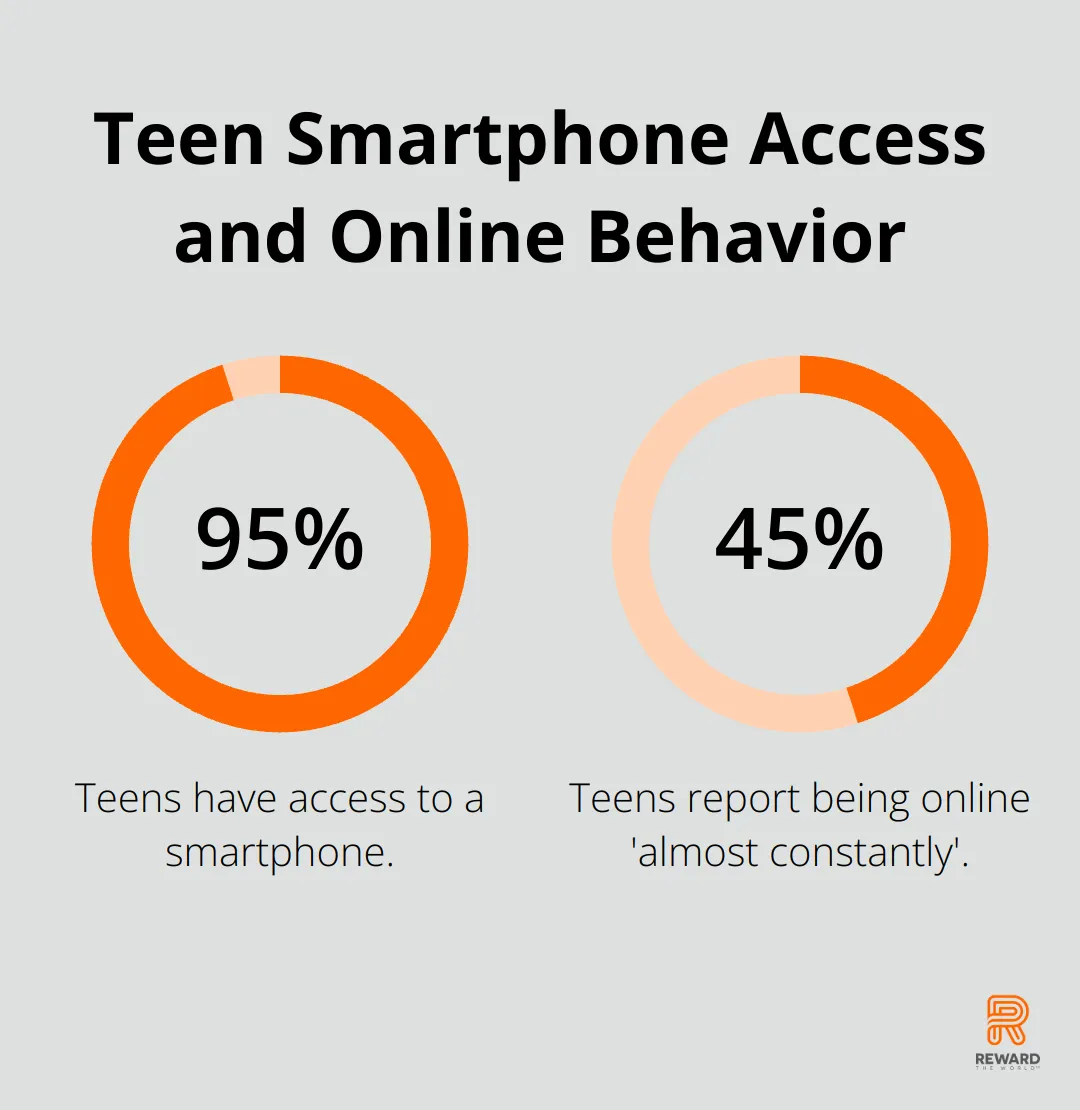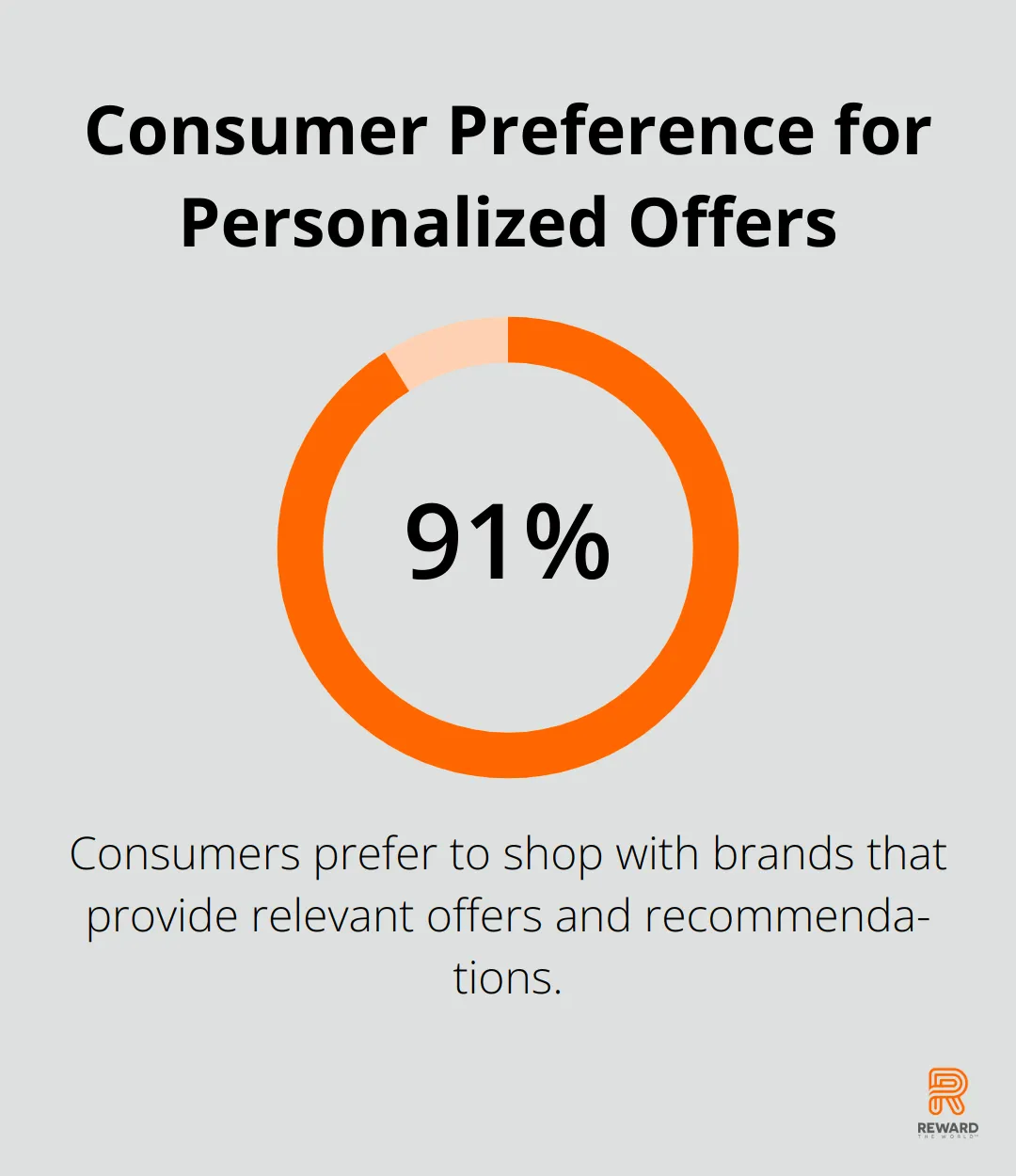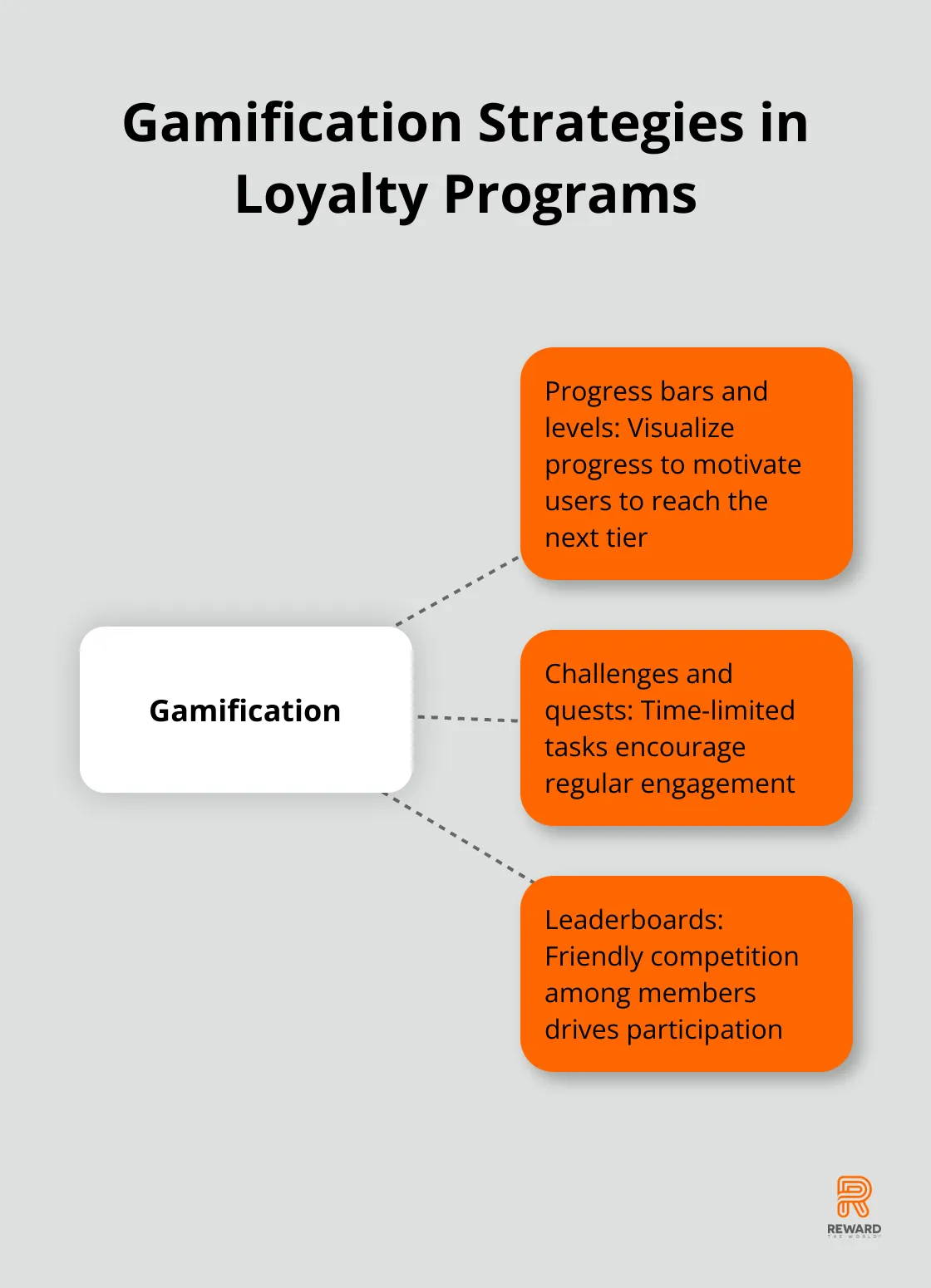
Digital natives are reshaping the landscape of customer loyalty. Born into a world of smartphones and social media, this tech-savvy generation demands more from brands than ever before.
At Reward the World, we’ve seen firsthand how Gen Z engagement is transforming loyalty programs. This blog post explores what digital natives truly want and how businesses can adapt their strategies to meet these evolving expectations.
Who Are Digital Natives?
Tech-Savvy and Always Connected
Digital natives, individuals born after 1995, have grown up in a world where technology permeates every aspect of life. They represent the first generation to experience smartphones, social media, and constant internet connectivity as the norm. This immersion in technology from an early age has significantly influenced their expectations and behaviors, particularly in their interactions with brands and loyalty programs.
A Pew Research Center study revealed that 95% of teens have access to a smartphone, with 45% reporting they’re online “almost constantly.” This constant connectivity translates to an expectation for brands to be available 24/7 across multiple platforms.

For loyalty programs, this necessitates an omnichannel presence. Digital natives expect to check their points, redeem rewards, and interact with brands seamlessly (whether on a mobile app, website, or in-store). Brands that fail to provide this seamless experience risk losing these tech-savvy customers to more adaptable competitors.
Value-Driven and Socially Conscious
Contrary to popular belief, digital natives aren’t solely focused on instant gratification. They exhibit highly value-driven and socially conscious behaviors. A 2023 study found that 73% of Gen Z consumers are willing to pay more for sustainable products, compared to just 50% of Baby Boomers. This mindset extends to their expectations from loyalty programs.
Digital natives prefer to engage with brands that align with their values. They show a higher likelihood of participating in loyalty programs that offer opportunities to support social causes or contribute to sustainability efforts. For instance, a program that allows members to donate points to charitable causes or earn rewards for eco-friendly behaviors will likely resonate strongly with this demographic.
Personalization Seekers
Digital natives have matured in an era of personalized content and recommendations. According to Salesforce research, consumer trust in companies is at a record low and AI is raising the stakes. This sentiment extends to loyalty programs that don’t tailor their offerings to individual preferences and behaviors.
Successful loyalty programs for digital natives use data to provide hyper-personalized experiences. This approach might include offering rewards based on past purchases, sending birthday perks, or suggesting products that align with the customer’s interests. The key lies in making each interaction feel unique and valuable to the individual.
Demand for Innovative Rewards
Digital natives crave innovative and unique rewards that go beyond traditional discounts or points. They seek experiences, exclusive access, and rewards that reflect their lifestyle and interests. This could include early access to product launches, VIP event invitations, or personalized services.
A study by Bond Brand Loyalty found that 77% of Gen Z members are more likely to continue doing business with brands that offer innovative loyalty program features. This statistic underscores the importance of creativity and innovation in loyalty program design for this demographic.
As we move forward, we’ll explore how these characteristics translate into specific preferences for loyalty programs among digital natives. Understanding these preferences is crucial for brands aiming to capture and retain the loyalty of this influential generation.
What Do Digital Natives Want from Loyalty Programs?
Digital natives reshape loyalty programs, demanding more than points and discounts. We’ve identified key preferences that set this generation apart.
Hyper-Personalization: Beyond Basic Customization
Digital natives expect loyalty programs to understand and cater to their individual needs. A study by Accenture found that 91% of consumers prefer to shop with brands that provide relevant offers and recommendations. This preference extends beyond simple name recognition.

Effective personalization analyzes purchase history, browsing behavior, and social media activity to create tailored rewards. A fitness enthusiast might receive rewards related to workout gear or healthy meal subscriptions, while a tech enthusiast could get early access to new gadget releases.
Real-Time Rewards: The Power of Instant Gratification
The era of waiting weeks for rewards to accumulate has ended. Digital natives want instant recognition for their loyalty. A KPMG survey revealed that generational and income divides signal potential shifts in consumer behavior and decisions over the long term.
Real-time rewards can include sending a digital coupon immediately after a purchase or offering instant cashback. Some innovative programs experiment with gamification elements, where customers earn and redeem rewards in real-time through interactive challenges or quests.
Seamless Omnichannel Experience: Bridging Online and Offline
Digital natives expect a consistent experience across all touchpoints. Harvard Business Review reported that 73% of consumers use multiple channels during their shopping journey. This statistic highlights the need for loyalty programs to work flawlessly whether a customer shops in-store, online, or through a mobile app.
Features like mobile wallet integration, QR code scanning for in-store purchases, and the ability to check and redeem points across all platforms (online and offline) can significantly enhance the user experience. The goal is to eliminate friction and make participation in the loyalty program effortless.
Social Impact: Aligning with Values
Today’s digital natives are socially conscious consumers. They support brands that align with their values. A study by Cone Communications revealed that 87% of consumers would purchase a product because a company advocated for an issue they cared about.
Loyalty programs can tap into this preference by offering options to donate points to charitable causes, earn rewards for sustainable behaviors, or participate in community-driven initiatives. For instance, a program might offer bonus points for recycling or choosing eco-friendly products.
These elements create meaningful connections with digital natives. It’s not just about transactions anymore – it’s about building a community and fostering long-term relationships based on shared values and personalized experiences.
As we explore the next section, we’ll discover innovative loyalty program features that captivate digital natives and keep them engaged for the long haul.
How Can Loyalty Programs Innovate for Digital Natives?
Digital natives demand innovation in loyalty programs. We’ve identified cutting-edge features that resonate with this tech-savvy generation. Let’s explore how businesses can elevate their loyalty strategies to meet these evolving expectations.
Gamification: Turning Loyalty into an Adventure
Gamification transforms loyalty programs from mundane point-collecting exercises into engaging experiences. A study found that 60% of consumers are more likely to purchase from a brand that offers a gamified experience. This approach taps into digital natives’ competitive nature and desire for fun interactions.
Successful gamification strategies include:

Incorporating elements like challenges, leaderboards, and achievement systems into loyalty programs can significantly boost engagement. Starbucks Rewards exemplifies effective gamification. Their app features challenges that unlock bonus stars (points), creating a sense of achievement and encouraging repeat visits.
Blockchain and Cryptocurrency: The Future of Rewards
Blockchain technology and cryptocurrency revolutionize loyalty programs. For businesses, crypto rewards offer significant cost savings compared to traditional loyalty programs. Blockchain technology automates many processes that were previously manual.
Key benefits include:
- Instant reward redemption: No more waiting for points to clear.
- Cross-program compatibility: Exchange points between different loyalty programs.
- Enhanced security: Reduced risk of fraud and point theft.
Rakuten, a global e-commerce giant, has successfully implemented blockchain in its Super Points program, allowing users to convert loyalty points into cryptocurrency.
Sustainability: Rewarding Eco-Conscious Behavior
Digital natives prioritize sustainability. Nielsen reports that 73% of millennials will pay more for sustainable products. Loyalty programs can tap into this sentiment by rewarding eco-friendly choices.
Effective sustainability initiatives in loyalty programs:
- Points for recycling: Partnerships with recycling centers to offer rewards for responsible disposal.
- Carbon offset rewards: Members use points to invest in carbon offset projects.
- Eco-product incentives: Bonus points for purchasing sustainable products.
The North Face’s XPLR Pass program exemplifies this approach, offering points for gear repairs and recycling, aligning with their customers’ environmental values.
Exclusive Experiences: Beyond Material Rewards
Digital natives value experiences over material possessions. A study found that 78% of millennials choose to spend money on a desirable experience over buying something desirable. Loyalty programs can capitalize on this preference by offering unique, exclusive experiences.
Examples of experience-based rewards:
- VIP event access: Exclusive tickets to concerts, sports events, or product launches. VIP members may also get free expedited shipping, upgraded offer discounts, and an exclusive customer care text service.
- Behind-the-scenes tours: Insider looks at company operations or manufacturing processes.
- Skill-building workshops: Classes or workshops related to the brand’s expertise.
American Express’s Membership Rewards program excels in this area, offering cardholders access to exclusive dining experiences and early ticket sales for high-demand events.
Final Thoughts
Digital natives reshape loyalty programs with their unique preferences and expectations. This tech-savvy generation demands personalization, instant gratification, seamless experiences, and alignment with their values. To capture their loyalty, brands must adapt and innovate their strategies.
The future of loyalty programs for digital natives lies in embracing technology and creativity. Gamification elements, blockchain-based rewards, sustainability initiatives, and exclusive experiences will play a significant role in fostering lasting connections. As Gen Z engagement continues to evolve, businesses must stay ahead of the curve to remain relevant.
At Reward the World, we offer a global incentives platform that caters to the diverse needs of digital natives. Our turnkey solution enables businesses to implement and manage loyalty programs that resonate with this demographic (offering instant rewards across multiple categories and languages). We strive to help brands build lasting relationships with this influential generation, ensuring loyalty extends far beyond points and discounts.
